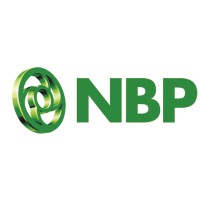
National Bank of Pakistan
National Bank of Pakistan is largest state owned bank operating in Pakistan. It has redefined its role and has moved from a public sector organization into a modern commercial bank. The Bank's services are available to individuals, corporate entities and government. While it continues to act as trustee of public funds and as the agent to the State Bank of Pakistan (in places where SBP does not have presence). National Bank of Pakistan has built an extensive branch network with over 1313 branches in Pakistan. It has agency arrangements with more than 3000 correspondent banks worldwide. Its subsidiaries are Taurus Securities Ltd, NBP Exchange Company Ltd, NBP Capital Ltd, NBP Modaraba Management Company Ltd, and CJSC Bank, Almaty, Kazakhstan. It has recently opened a subsidiary in Dushanbe, Tajikistan. The bank has global presence having 23 overseas branches in 11 countries. The bank also has a representative office in China and Canada. The Bank's joint ventures are, United National Bank (UK), First Investment Bank and NAFA, an Asset Management Company (a joint venture with NIB Bank & Fullerton Fund Management of Singapore). National Bank has earned recognition and numerous awards internationally.(see Awards and Achievements) Symbol of NBP Assigned by all Stock Exchanges: NBP






